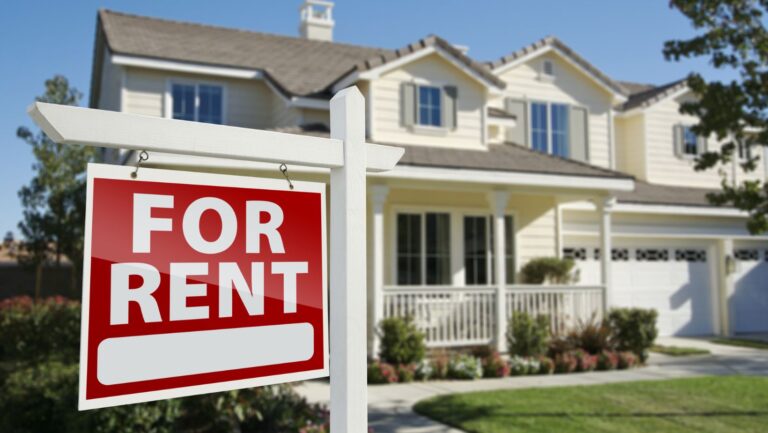Turning your home into a rental property can be a great way to generate extra income. Whether you’re looking to supplement your monthly income, manage a property you can’t sell, or have inherited a home you don’t want to sell, becoming a landlord could be a smart financial move. However, renting out your home isn’t as simple as just putting up a “For Rent” sign and waiting for tenants. There are several steps you’ll need to take to prepare both financially and physically for the responsibilities of being a landlord.
In this article, we’ll cover some essential tips to help you turn your home into a rental property. From evaluating the financial aspects to making sure your property is appealing to potential renters, we’ve got you covered. Let’s dive into the steps you should take before you start renting out your home.
1. Assess Your Finances
The first step in turning your home into a rental property is to evaluate your financial situation. Renting out a home is a big responsibility, and it’s essential to make sure you’re financially prepared for the costs and responsibilities that come with it.
Start by calculating how much money you owe on the property, including your mortgage, property taxes, and any maintenance costs. You’ll also need to consider how much you can charge for rent. Research comparable rental properties in your area to get an idea of the going rates. Remember, the rent you charge needs to cover your costs and ideally provide you with extra income.
If you need extra capital to get started, such as for renovations or repairs, consider using low interest personal loans to cover these expenses. A personal loan can give you the funds to get your home ready for renters without putting a strain on your savings. Just make sure you carefully review the loan terms and monthly payments to ensure it fits your financial situation.
2. Understand Local Laws and Regulations
Before you start renting out your home, it’s crucial to familiarize yourself with local landlord-tenant laws and property regulations. These laws vary from state to state, and even from city to city, so make sure you understand the rules in your specific location. Some common areas you’ll need to look into include:
- Tenant rights: Understand what rights tenants have in your area. This includes things like the amount of notice you need to give before entering the rental property, how security deposits must be handled, and what is considered acceptable behavior for tenants.
- Landlord responsibilities: Know what you are legally required to maintain or repair in the property, and what you need to do to ensure it is safe and habitable for tenants.
- Zoning laws: In some areas, certain properties can’t be used for rental purposes, especially if you’re considering converting part of your home into a rental unit.
By educating yourself on these laws, you’ll ensure that you stay in compliance and avoid any legal issues down the road.
3. Set a Competitive Rent Price
One of the most important factors when turning your home into a rental property is setting the right rent price. Charge too much, and you’ll have trouble finding tenants; charge too little, and you may struggle to cover your expenses. To find a fair price, research comparable properties in your area. Look at homes of similar size, condition, and location to get a sense of what’s typical in your market.
It’s also helpful to think about the condition of your home. If your property is in better shape than others in the area, you can justify charging a little more for rent. On the other hand, if your home needs repairs or renovations, you may need to adjust the price accordingly.
A good rule of thumb is to aim for a rent price that covers your monthly mortgage, property taxes, and insurance, along with any other maintenance costs. Ideally, you want to earn extra income while making sure the property is still affordable for potential tenants.
4. Make Necessary Repairs and Updates
Before renting out your home, you’ll want to make sure it’s in top shape for tenants. This doesn’t mean you need to do a full renovation, but addressing any obvious issues will help you attract better tenants and keep your property in good condition. Start by doing a walk-through of your home and creating a list of any repairs or updates that need to be made. Common issues include leaky faucets, worn-out carpets, and cracked windows. If the property is older, you may want to think about upgrading appliances or replacing outdated flooring. These updates can make your home more appealing to renters and help you justify a higher rent.
If you’re not sure where to start, consider hiring a professional inspector to assess the condition of the property and give you an objective evaluation of what needs to be fixed. You can also use a low interest personal loan if the repairs are substantial and you don’t have enough savings to cover them.
5. Market Your Property
Once your home is ready, the next step is to start looking for tenants. The best way to market your property depends on the local rental market. Common options include:
- Online listings: Websites like Zillow, Craigslist, or Apartments.com allow you to post photos, descriptions, and rent prices for potential tenants to view.
- Social media: Don’t underestimate the power of social media in helping you find renters. Posting on your personal accounts or in local community groups can help get the word out.
- Real estate agents: If you’d rather leave the marketing to professionals, consider hiring a real estate agent who specializes in rental properties. They can help find tenants and handle some of the administrative work.
In your listings, be sure to include clear, high-quality photos of the property, and provide a detailed description of the space, including the number of bedrooms, bathrooms, and any special features (such as a backyard or garage). Make sure to highlight any recent upgrades or repairs, as these can make your property stand out to potential tenants.
6. Screen Tenants Carefully
Finding the right tenants is one of the most important steps in turning your home into a rental property. You want tenants who are reliable, responsible, and able to pay rent on time. To ensure you find the right fit, consider implementing a thorough tenant screening process.
This can include:
- Credit check: A credit report can help you assess whether the tenant is financially responsible.
- Background check: A background check will show any criminal history, which is important for safety and peace of mind.
- Rental history: Ask for references from previous landlords to get an idea of how the tenant behaved in their prior rental homes.
Screening tenants can take time, but it’s essential to finding reliable renters who will respect your property and pay rent consistently.
7. Keep Up With Maintenance and Communication
Once you’ve rented out your home, your responsibilities don’t end there. As a landlord, it’s important to stay on top of maintenance and keep open lines of communication with your tenants. Regularly inspect the property to make sure everything is in working order, and address any repair requests in a timely manner.
Being a responsive and proactive landlord can help you retain good tenants and avoid unnecessary issues. Also, make sure to keep good records of all transactions, repairs, and communications with your tenants to ensure everything runs smoothly and you stay legally protected.
Conclusion: Be Prepared for the Responsibilities of Landlordship
Turning your home into a rental property can be a rewarding financial decision, but it comes with responsibilities. From preparing the property to screening tenants and maintaining the space, being a landlord requires time, effort, and money. However, with the right approach, you can create a steady stream of passive income and make the most of your property.





